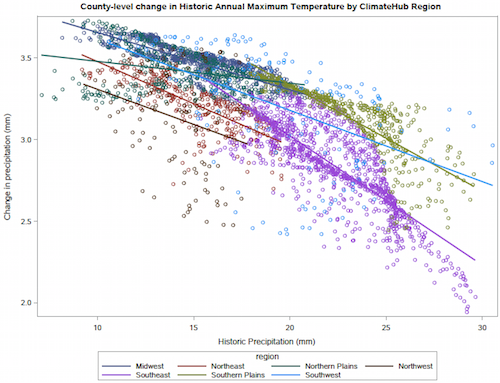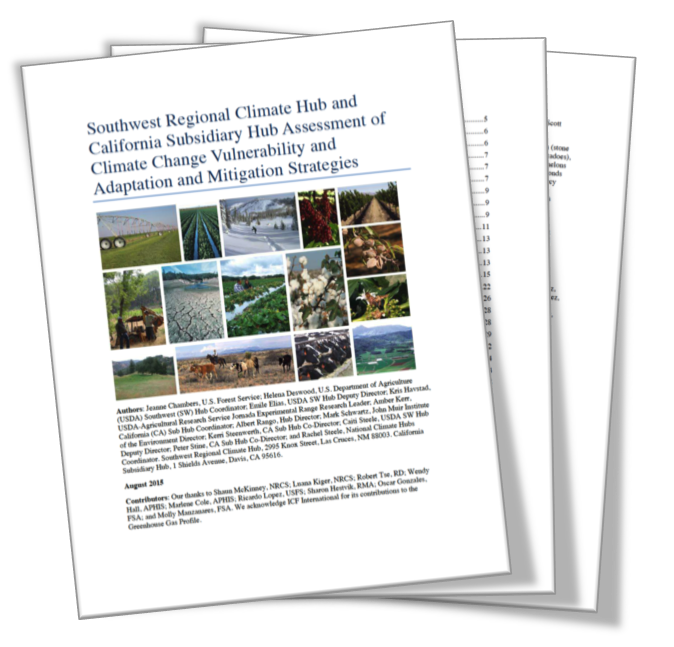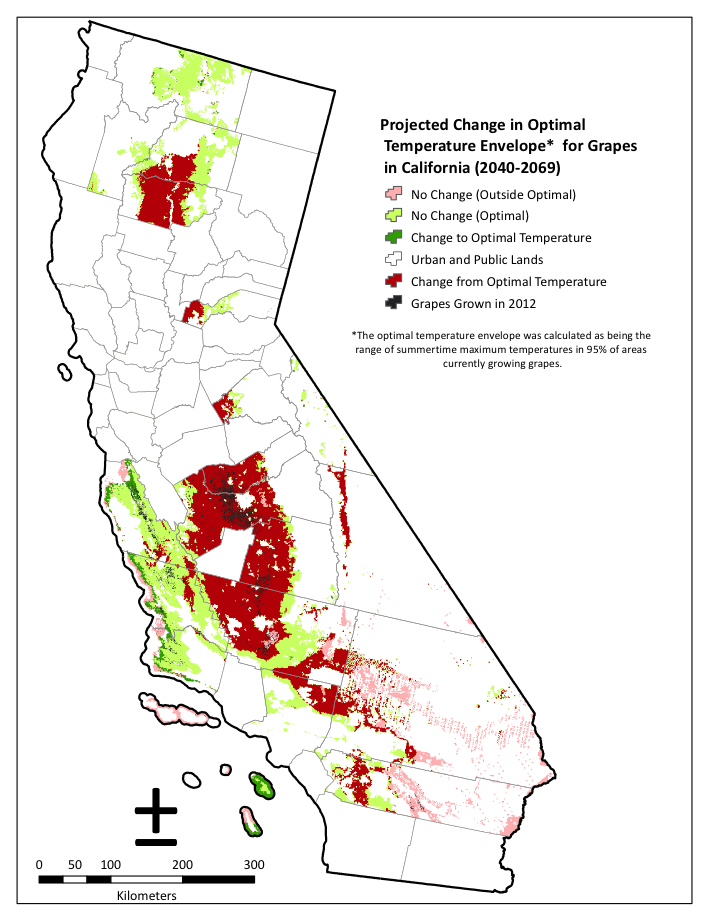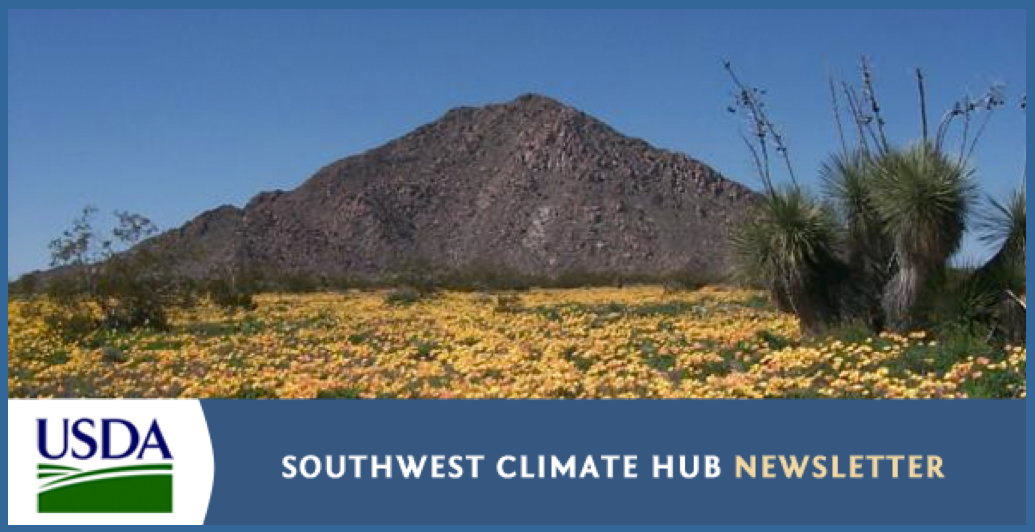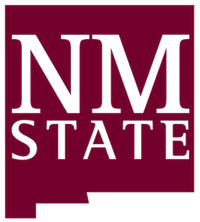- Data
- Videos
-
Publications & Research
-
Education
- Water Conservation Data Jam - Curriculum for 6th-12th Grade Students
- Climate Change and Wildfire – Curriculum Unit for 9-12 Grade Students
- Climate Change and the Carbon Cycle – Curriculum Unit for 9-12 Grade Students
- Where's Our Water? Water Conservation in the Southwest - Lesson for 6-8 Grade Students
- Climate Change and the Water Cycle - 10-Hour Curriculum Unit for 6-12 Grade Students
- The Effects of Climate Change on Agricultural Systems - 5-Hour Curriculum Unit for 6-12 Grade Students
- Cambio climatico y el ciclo del agua
- Webinars and Online Courses
- Websites
- News & Events
- About Us
- RMA
September Issue - Bulletin Articles
| Spatial Thermal Envelope Assessment of Southwestern Crops Shows Projected Changes by Mid-Century | |
|
Researchers at the Southwest Hub used cropscape and pixel level MACA data to evaluate the current distribution of almonds, tomatoes, grapes, alfalfa, corn, and cotton in our region to estimate the present thermal envelope for each crop. They used change detection to estimate how much land will shift to or away from the present thermal envelope in which crops are currently grown. |
|
The Southwest Hub to Host Two Workshops
The drought in California is of historic proportion, both in its intensity and its effect on agriculture. The USDA Southwest Climate Hub and Sub Hub will host a workshop to gather leaders in California rangeland management to examine the current state of the livestock grazing industry and identify post-drought actions to reestablish sustainable grazing practices and the grazing building block.
The second workshop is designed to provide training and education to USDA field staff on greenhouse gasses and carbon sequestration in agriculture and forestry. The two-day event will be held on February 9-10, 2016 in Las Cruces, New Mexico.
Dust on Snow Research to Continue
This summer we’ve expanded our research on modeling spring snowmelt to include an exploration of the effects of dust on snow in the Upper Rio Grande basin. Every year, dust from the Colorado Plateau is transported to the southern peaks of the Rocky Mountains. When this red-brown dust is deposited on the annual snowpack, it lowers the albedo of the snowpack and contributes to earlier snowmelt. Ismael Beltran, a civil engineering intern from University of Texas, El Paso, collected EPA air quality measurements of airborne particulate matter to find out which were the largest late Winter/early Spring dust storm events in the Four Corners region over the last 10 years. He then analyzed satellite imagery (Terra MODIS) from before and after these dust storm events to see if the effects on snow albedo could be detected. He also examined stream flow data to see if there might be a pattern of earlier streamflow associated with the large dust storm events and changes in snow albedo. Ismael’s pilot study focused on the Rio Grande headwaters and showed that dust events and earlier streamflow appear to be coincident. We will be extending his methodology over other high elevation basins in the San Juan and Sangre de Cristo mountains to see if we can detect the same patterns throughout the Upper Rio Grande.
